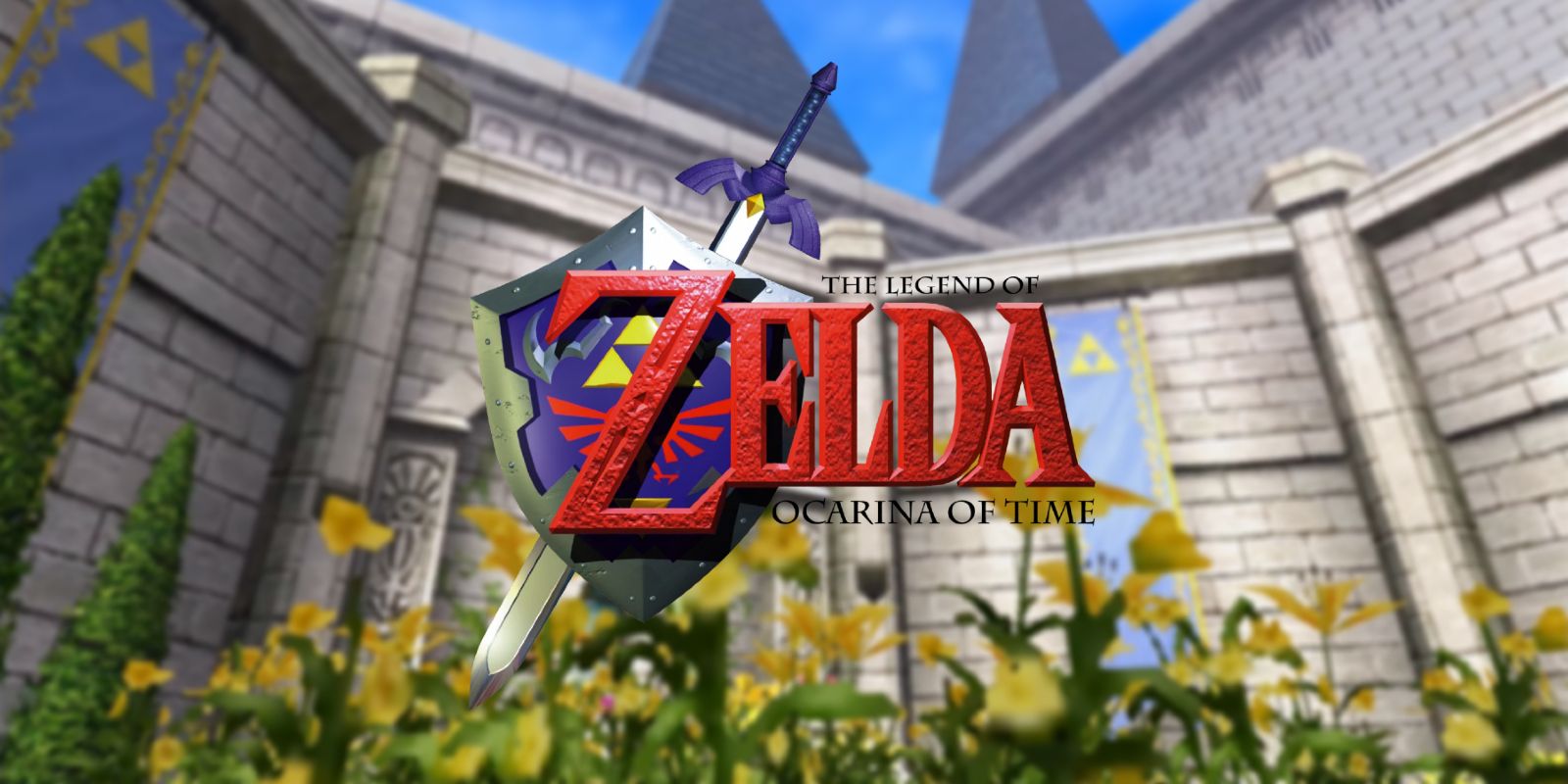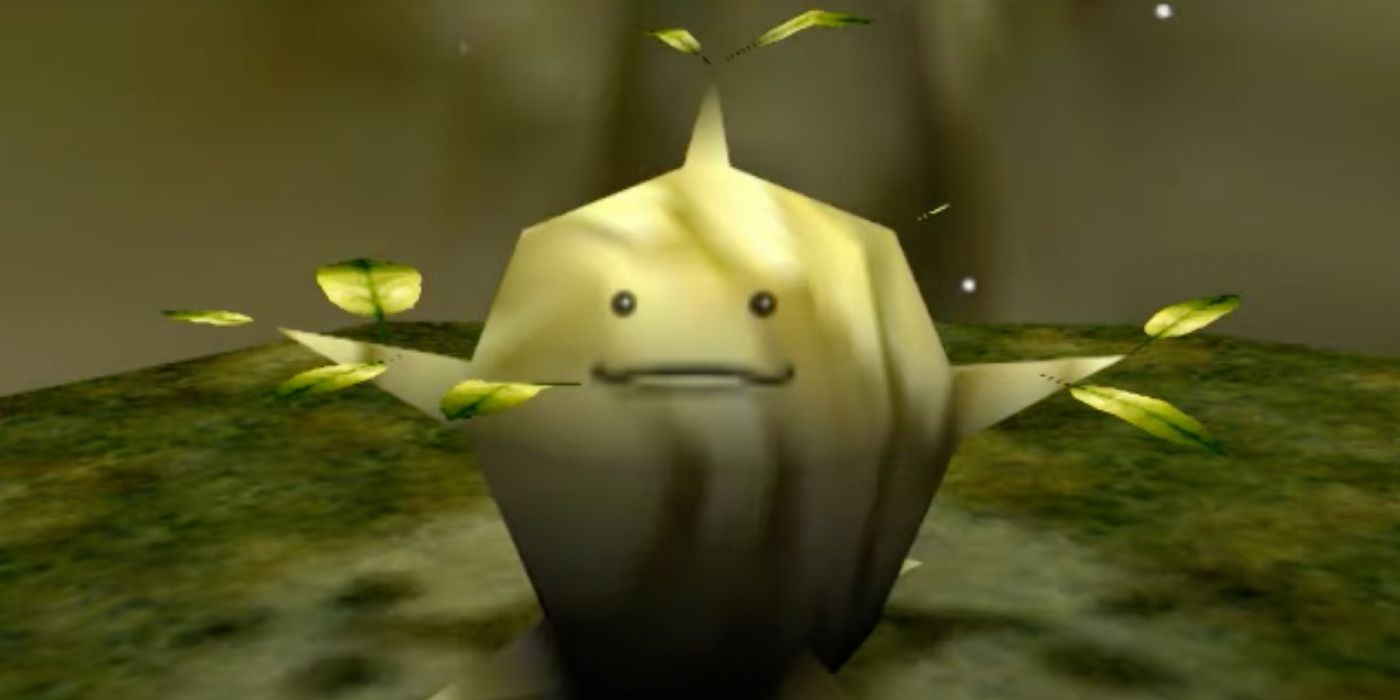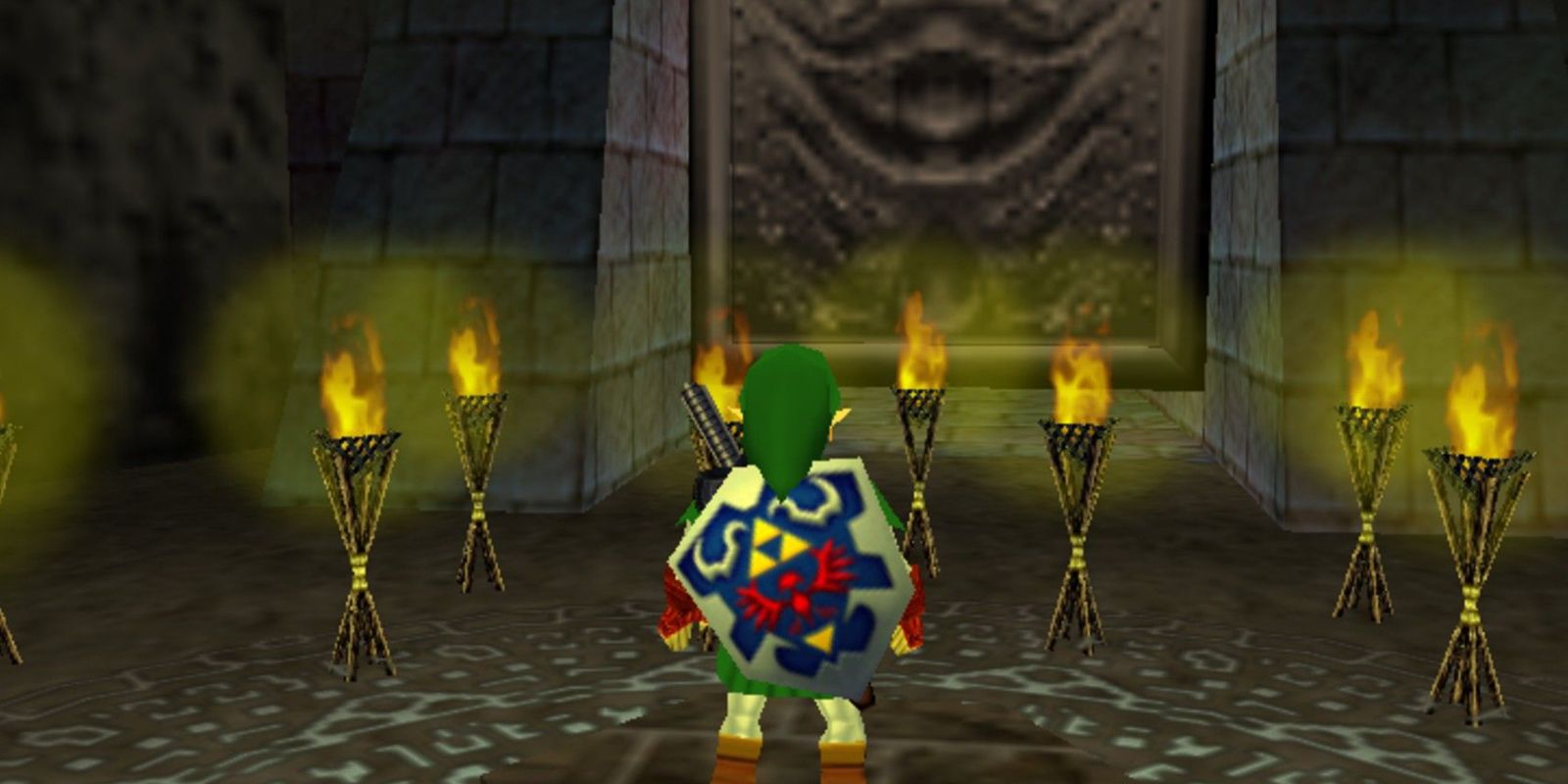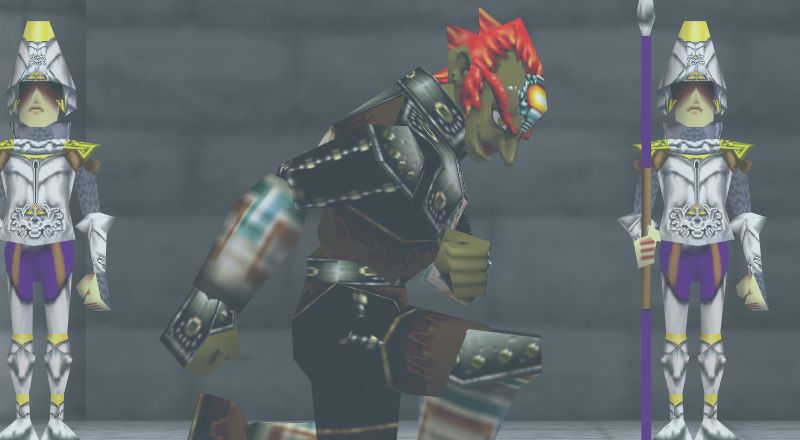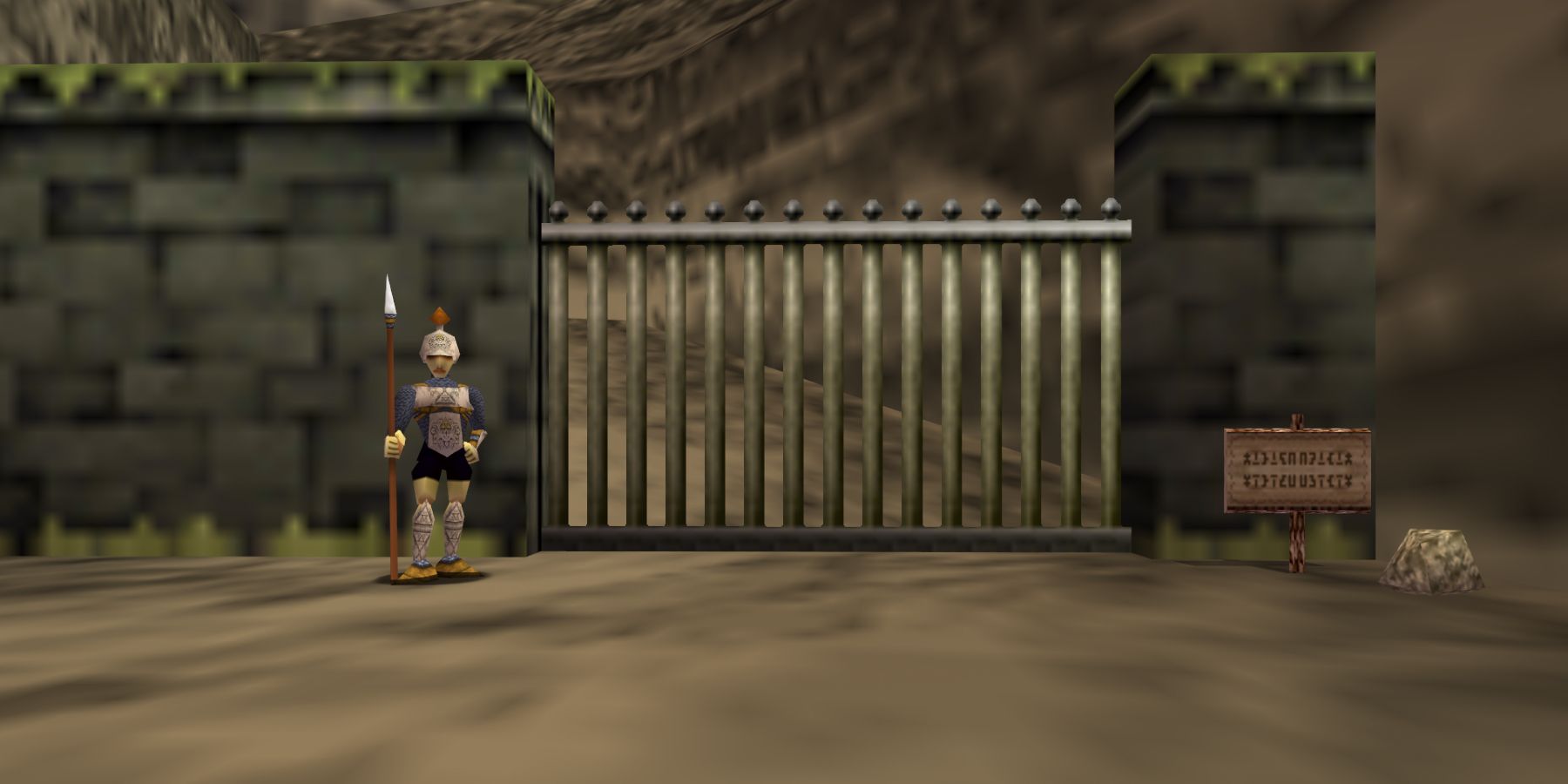The settings of Zelda games are almost uniformly kingdoms in crisis, as the series is chiefly concerned with a confrontation between good and evil destined to reoccur throughout the ages. The Legend of Zelda: Ocarina of Time sees Ganondorf plunge Hyrule into chaos by the time of Link's adulthood, but even the apparently flourishing kingdom of Link's childhood has signs of turmoil; there are many subtle indicators Ocarina of Time's Hyrule is suffering consequences of a war that ravaged the realm not even a decade prior to the game's beginning.
Ganondorf is the immediate threat in Ocarina of Time, so the troubles that predate the game's narrative are rarely mentioned. Players assume the role of a Link raised as a Kokiri and share his ignorant world view. When Link leaves his forest home, all he knows is that "a wicked man from the desert" is attempting to harness the power of the Triforce, and he's advised to seek out the "Princess of Destiny." While child Link goes about his journey to retrieve the Spiritual Stones, he travels to distant corners of Hyrule, where hints of the Royal Family's ineffective rule can be seen.
Princess Zelda, foretold as the Princess of Destiny by the Great Deku Tree, represents a potential turning point in the governance of Hyrule Kingdom. As the mortal reincarnation of the Goddess Hylia, Zelda is the paradigm of good to combat Ganondorf's evil. She is roughly the same age as Link, meaning she too was born either during or shortly after the war that consumed Hyrule prior to Ocarina of Time. Though the game does not explicitly address the competency of her familial predecessors, Ocarina of Time's setting implies Hylian rulers of dubious morals and effectiveness.
What Ocarina Of Time Characters Actually Say About The Hyrulean Civil War
Not many details are expressly confirmed about Ocarina of Time's Hyrulean civil war. The conflict is only directly mentioned by the Deku Tree Sprout, which informs Link of his true Hylian heritage after players have completed Ocarina of Time's Forest Temple. Even in this conversation, the war is only briefly addressed:
"Some time ago, before the King of Hyrule unified this country, there was a fierce war in our world. One day, to escape from the fires of the war, a Hylian mother and her baby boy entered this forbidden forest. The mother was gravely injured... Her only choice was to entrust the child to the Deku Tree, the guardian spirit of the forest."
Additional references to the Hyrulean Civil War appear in supplementary real-world texts, such as Hyrule Historia and The Legend of Zelda Encyclopedia, but these are similarly light on details. The Deku Tree Sprout's words do at least confirm the war was recent, being only as long passed as Link is old, and also make clear Kokiri Forest's political status in relation to the war.
The Great Deku Tree, one of Zelda's more prominent recurring characters, is the guardian spirit of the forest and the Kokiri who dwell within. Link's mother likely brought her infant son there because she knew it was a neutral location safe from the devastation of the Hyrulean Civil War, and the Hylian child was only allowed to stay because "The Deku Tree could sense that [Link] was a child of destiny, whose fate would affect the entire world." Link and Sheik appear to be the only outsiders allowed to travel freely in and out of Kokiri Forest and the Lost Woods.
Ocarina Of Time's Shadow Temple May Be A Sheikah Torture Chamber
Though The Legend of Zelda's Sheikah Tribe remained mysterious throughout the series until their prominence in Breath of the Wild, environmental clues in Ocarina of Time suggest they were involved in dark deeds during the Hyrulean Civil War. Kakariko Village - hometown of Ocarina's one true Sheikah character, Impa, and described by a Hylian soldier as once being a Sheikah village - is home to the Shadow Temple. There, Link is stopped by a spirit in one of the crypts that says, "Shadow Temple... Here is gathered Hyrule's bloody history of greed and hatred." The massive Sheikah symbol on the dungeon's entrance implies this bloody history pertains to the Sheikah's service to the Royal Family.
Within the Shadow Temple are many torture chambers, guillotines, and pools of blood. Perhaps these are relics of a conflict much further in Ocarina of Time's past, but it's not unreasonable to assume the Royal Family's enemies may have been brought to Kakariko Village for interrogation during the Hyrulean Civil War. The entrance to the Shadow Temple remains hidden, but rumors surely spread throughout Hyrule about what happens to those who dissent from the Royal Family.
Ganondorf's Rise Suggests Discontent Following Ocarina's Hyrulean Civil War
Though the King of Hyrule has consolidated power by the time Ocarina of Time starts, he does not hold it for long, despite ample warning of Ganondorf's imminent coup. It is unknown what role, if any, the Gerudo played in the Hyrulean Civil War, but the King of Thieves is demonstrably aware that the current power structure can be toppled.
The Gerudo are desert-dwelling warriors and thieves whose population is almost entirely female. Only one male is born to the Gerudo every century, and he becomes the de facto king. If the only male Gerudo in 100 years emerging from the desert to swear fealty to the King of Hyrule wasn't suspicious enough, Princess Zelda also warned her father of the visions she had of Ganondorf's power and Hyrule's destruction. The king technically unified the country through civil war, but Ganondorf's rise could be emblematic of discontented populations in the conflict's wake.
The Zora & Gorons Appear Sanctioned Off In Ocarina's Postwar Hyrule
Ocarina of Time's Castle Town has a noticeable lack of anyone who isn't Hylian. The Kokiri are provided for and protected by their forest, and the Gerudo seem adverse to anyone but their own, but the Zora and Gorons seem oddly reclusive in spite of their bustling cultures during Link's childhood. Zora's Domain is hidden behind a waterfall, only traversable after playing a song passed down through generations of the Royal Family. Princess Ruto appearing in Lake Hylia proves they are able to move freely beyond the Domain, but their culture is essentially inaccessible to anyone who doesn't know "Zelda's Lullaby," a song that, according to Impa, "Only Royal Family members are allowed to learn."
The Gorons' situation is even more troublesome. The cave-dwelling people are only found on their usual Legend of Zelda home, Death Mountain, which is only accessible by the Death Mountain Trail. The entrance to said trail is closed behind a gate, which is stationed by a Hyrulean guard at all times. In order to be allowed through the gate, Link has to bring express, written permission from a member of the Royal Family.
While not much is explicitly known about the Hyrulean Civil War, this collection of observations about postbellum Hyrule hints at how and why the conflict arose. In its wake, marginalized communities appear to be largely separated from Hyrulean culture, with Hylians literally dancing in the streets of The Legend of Zelda: Ocarina of Time's Castle Town, while the Gorons live behind a locked and guarded gate.

